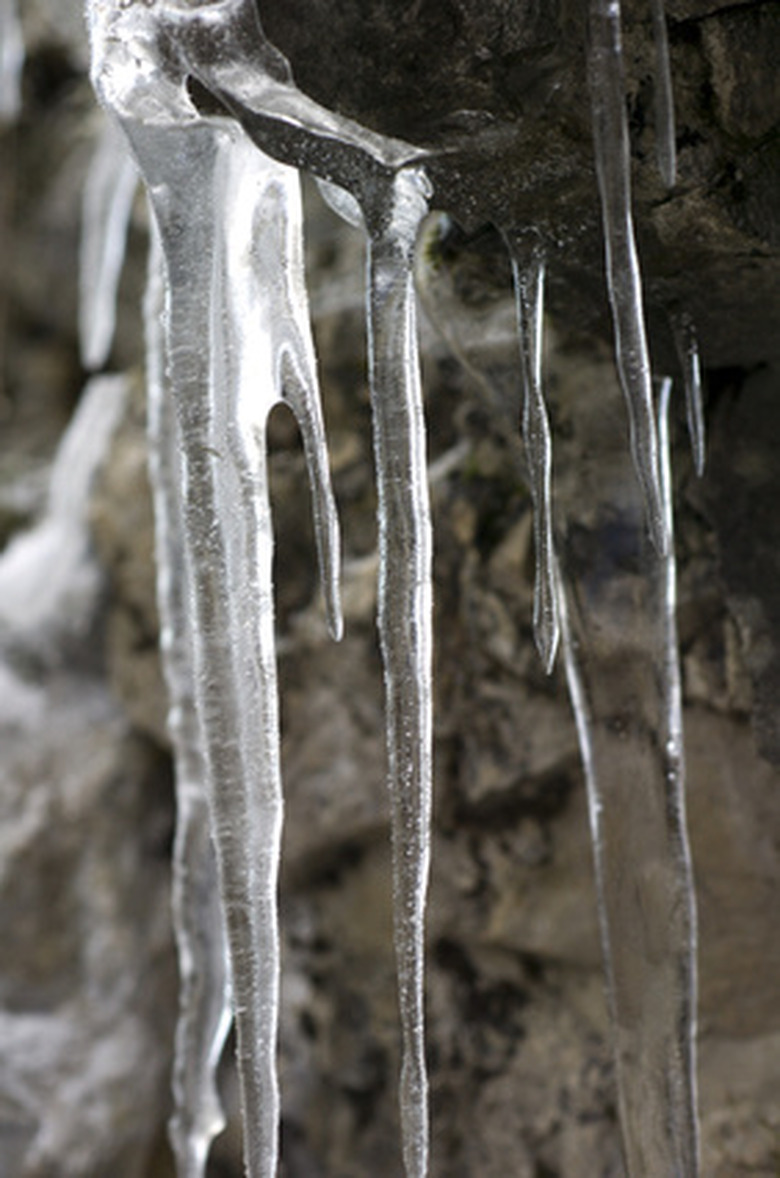How To Calculate The Volume For Ice
It's a hot summer day and you want to make yourself a nice glass of lemonade. You add some ice to your drink, and the lemonade spills over! But your friend, who added ice to their drink before pouring in the lemonade, has no spills, even as the ice melts into the drink.
In order to understand this phenomena, you need to understand how the density of water changes with temperature.
What Is Volume Density?
What Is Volume Density?
In order to understand how to calculate a volumetric ice to water ratio, you may ask, "1 cup of ice equals how much water?" To answer this question, you need to understand density.
The volume density of water describes the mass of water that lives in one unit of volume. The dimensions of volume density are therefore mass per unit volume. The units can be grams per unit milliliter (g/mL), kg per unit liter (kg/L) or any other unit of mass per unit of volume. The density of liquid water is really easy to remember: it is 1 g/mL.
Calculating The Volume of Ice
Calculating The Volume of Ice
Water is actually a very unusual substance because solid water (called ice) is less dense than liquid water. The density of ice is 0.92 g/mL, which means that if you take one gram of water and put in the freezer, when you take it out it will have expanded in volume and take up more space than when it was liquid.
Conversely, (remember the lemonade from earlier), if you start with a drink with a few ice cubes, and they melt, the water level in the cup will actually stay the same, since the floating ice only takes up as much space as its submerged portion did once it has melted.
But what if you have one solid cup of ice? How many cups of water will you have when the ice melts?
Start by converting U.S. cups to milliliters: 1 U.S. cup = 236.588 mL, in order to use the known density in units of grams per milliliter. Now, multiply the volume in milliliters by the density of ice to get the grams of water, which does not change as the temperature of the water changes.
Therefore, the mass of the water is 236.588 mL times 0.92 g/mL = 217.661 g of water. To calculate the volume of 217.661 grams of liquid water, simple divide the grams of water by the density of liquid water: 217.661 g / (1 g/mL) = 217.661 mL, or about 0.92 cups of water.
A really good way to check your work is to check if the answer you got "makes sense." In this case, you know that volume decreases when ice melts to liquid water. So if the volume decreased, you are on the right track! Looking at the numbers, it was determined that about 237 milliliters of ice melts to about 218 milliliters of liquid water; so the answer "makes sense!"
A Quick Way to Convert Ice to Water Volume
A Quick Way to Convert Ice to Water Volume
It is worth remembering the full procedure for calculating volumes from densities, but using the ice to water ratio is a fast way to do this calculation.
The ratio of the densities is simply the density of one divided by the density of the other: The density of ice to water is 0.92. Using the ratio, one can simply multiply the volume of the ice by 0.92, which is the conversion factor for the volume of ice to liquid water.
Notice that earlier, you could have just used this ratio to quickly calculate that 1 cup of ice results in 0.92 cups of liquid water.
In general, just like the example of the ice to water volume conversion, you can use ratios for quick conversions in other situations as well.
TL;DR (Too Long; Didn't Read)
Solid water (ice) is less dense than liquid water. The ratio of the volumetric densities (.92) can be used to quickly convert the volume of ice to the volume of liquid water.
Weight, Mass and Volume
Weight, Mass and Volume
All of these terms, weight, mass and volume, have what are called "units." Each one tells us what type of quantity is being measured.
Weight is the force of an object due its mass and the local acceleration of gravity, but mass is just the amount of matter in an object. The mass of the object only changes if someone physically cuts part of it off of the object and take it away, but the weight of an object can change if someone moves it from a valley to the top of a mountain.
Volume on the other hand is the amount of physical space needed for some amount of mass.
It is important to remember the differences between these quantities, so you can make sure your answers "make sense!"
Cite This Article
MLA
Gupta, Lipi. "How To Calculate The Volume For Ice" sciencing.com, https://www.sciencing.com/calculate-volume-ice-7851671/. 2 September 2019.
APA
Gupta, Lipi. (2019, September 2). How To Calculate The Volume For Ice. sciencing.com. Retrieved from https://www.sciencing.com/calculate-volume-ice-7851671/
Chicago
Gupta, Lipi. How To Calculate The Volume For Ice last modified March 24, 2022. https://www.sciencing.com/calculate-volume-ice-7851671/
